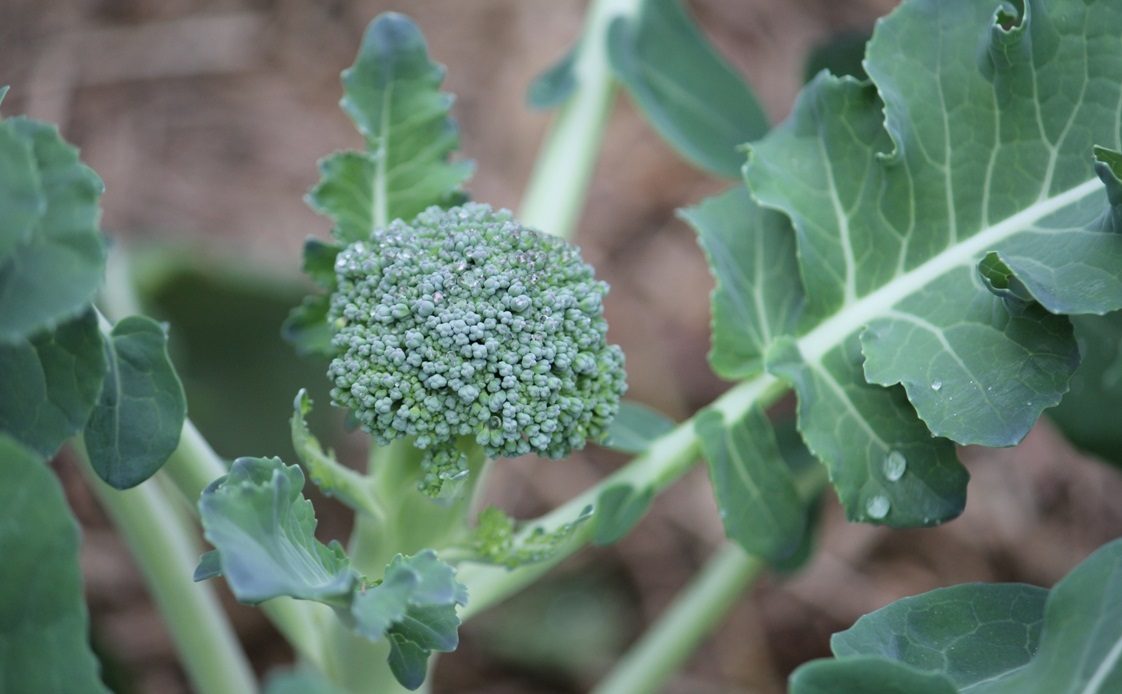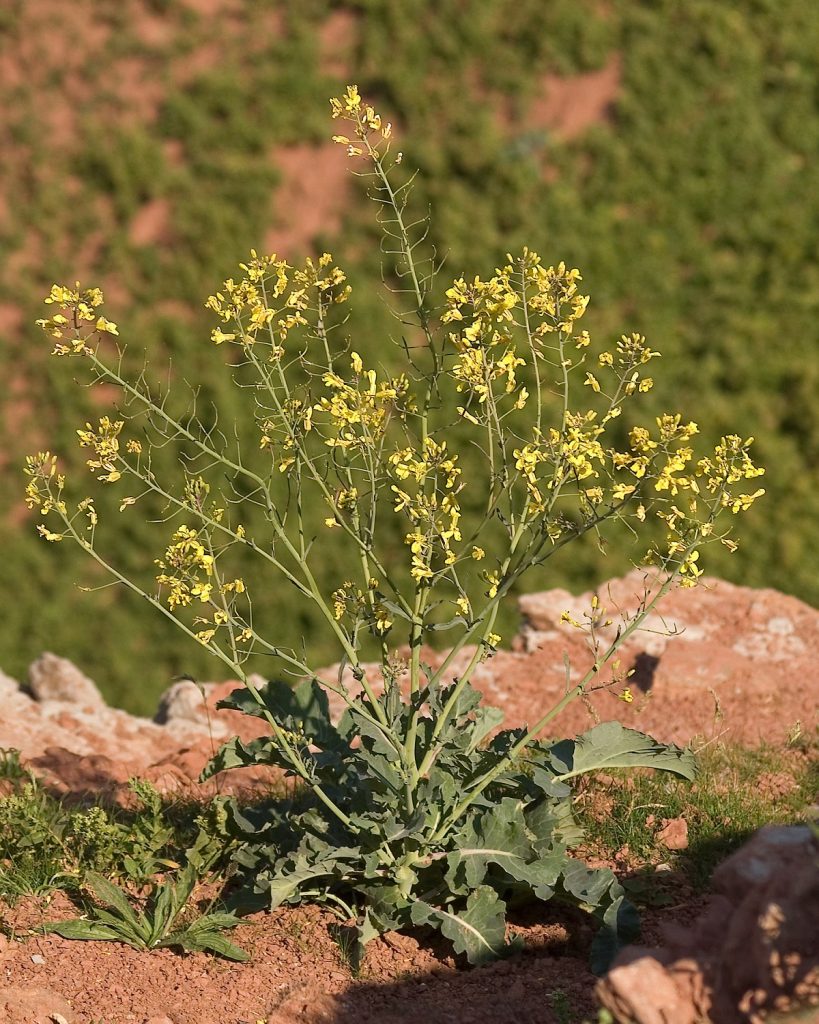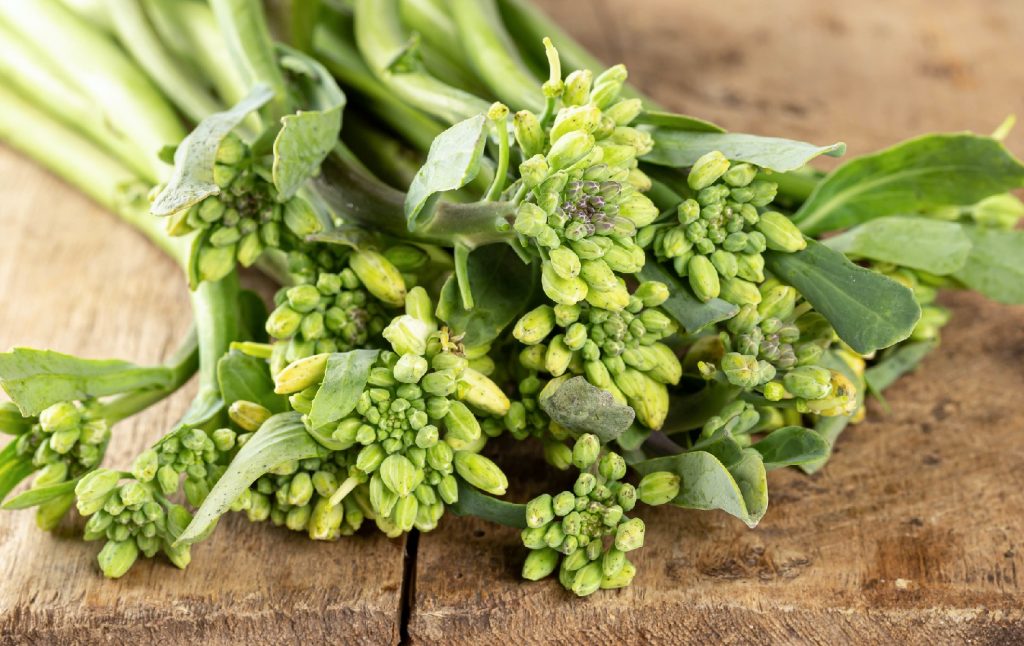

We’re here to help! Wild Yards is a completely free website that is 100% dedicated to helping you create a wildlife-friendly, sustainable yard. Read more
WildYards is reader-supported. When you buy a product through a link on our site, we may earn a comission. Every product is independently selected by our (obsessive) editors and our reviews are unbiased and objective. Read more about our mission or our privacy policy.
Broccoli is one of the most popularly harvested vegetables on the planet. Its unique flavor and texture make it a staple food at many a family dinner. But, history dictates that we’ve only been eating broccoli in the US since the 18th century. With that in mind, is broccoli man-made?
Broccoli is a man-made vegetable! It was originally derived from an ancient cabbage, which also happens to be the ancestor of some of our other favorite vegetables. Broccoli is most likely not the only man-made vegetable you serve up regularly for meals.
How was broccoli first grown and made?
Broccoli actually grew from wild cabbage plants – they were bred from the brassica oleracea plant, specifically. Given their form, you might assume that broccolis grow like little trees, but that isn’t the case!
Instead, they sprout from the ground, with giant cabbage leaves surrounding them, just as you will see on a cauliflower plant. The idea for this new vegetable came from the fact that wild cabbage – at the time – was a problematic crop to harvest. One of the problems with wild cabbage, for example, is that it is a biennial plant – it will only produce flowers every other year.
The brassica oleracea thus proved inefficient for feeding the populace, and over time, tastes changed – as it proved a nutritional means to end, much less a tasty treat.
To counteract these issues, centuries ago, wild cabbages were planted in controlled areas, then reproduced and refarmed multiple times over – thus creating a descendent much larger, easier to grow, and even more appetizing!
Over time, these plants mutated, becoming easier to maintain and grow crops, with more efficient growing periods and bigger, tastier vegetables to harvest. Effectively, this propagation method resulted in not only a completely new plant, but a strategically, technically manufactured vegetable – broccoli as we know it today.
It took a long time for broccoli to reach the state we know it as today. Thanks to our current research and practice, we know that it can take years, if not decades, for plants to grow at a selective quality many of us demand. Thankfully, once you have the ‘formula’ correct, it gets easier to propagate from the ‘template’! In some cases, it may have taken thousands of years for the crops we enjoy now to have reached their present state.
It’s thought that the Roman Empire is partially responsible for having produced the broccoli crop as we know it today – and as such, they’ve helped us to understand how to grow and modify other plants, genetically or otherwise.
You can still see brassica oleracea growing in the wild today – it’s also known as the wild mustard plant, and it’s a frequent sight across European and Atlantic coastlines.
The word ‘broccoli’ also gives a clue to its origins. It’s derived from the Italian word, ‘broccolo’. This roughly translates to ‘a flowering crest from a cabbage’.

Is broccoli a GMO – a genetically modified organism?
No – while broccoli is certainly a man-made plant, it is not genetically modified. At least, it has not undergone GMO treatment to reach its current form.
A GMO is an organism (in the form of a plant, an animal, a microorganism, or any kind of organism for that matter) that has been genetically modified in a laboratory.
Scientists can use genetic engineering or transgenic technology to change their genetic combinations. The point is to create organisms that do not exist in nature. Some vegetables that are grown in this way, for example, include corn, soybeans, certain potatoes, papayas, and summer squash.
Broccoli was created through selective breeding, centuries before GMO practices first emerged. While nothing is preventing modern science from adjusting the standards we currently expect from broccoli, it’s a historical marvel and the product of centuries of careful propagation.
Contrary to popular belief, broccoli is also not a genetic mutation of the cauliflower, or vice-versa – they simply derive from the same parent plant, the wild cabbage.
Selective breeding is vastly different from GMO practice because it is entirely based on farming, not genetic ‘code-editing’. Some farmers still choose to breed crops to help defend them against pests and certain weather conditions selectively. That said, it’s not as common a process in modern agriculture due to its relative inefficiency compared to genetic modification.
Is broccoli good for you – despite being man-made?
Despite its history as a man-made crop, broccoli is rich in various essential nutrients. It’s naturally high in fiber and protein and is extremely low-fat. It’s a fantastic source of vitamin C and vitamin K, too, as well as folate, iron, and manganese. What’s even better about this healthy crop is that you can enjoy it raw or cooked, as per your own tastes.
There is some concern over whether or not broccoli is safe to consume as it has technically been ‘edited’ from its original plant. These concerns can get mixed up with worries about GM crops – providing you eat non-GMO broccoli, it’s a great addition to various meals.
Did you know that broccoli is one of the healthiest, most nutrient-dense vegetables available to enjoy? If you’re having difficulty encouraging your kids to eat any vegetables at all, make broccoli a priority to work into their diets!
Were any other vegetables created from the brassica oleracea plant?
The brassica oleracea plant is responsible for having helped to produce modern descendants in cauliflower, Brussel sprouts, modern cabbages, kale, and kohlrabi. There’s also a further twist to the broccoli tale, with broccolini being a further off-shoot of the same wild cabbage.
Broccolini takes the selective breeding processes of the original broccoli vegetable and combines it with genes found in Chinese broccoli – therefore creating an entirely new vegetable. This plant is commonly mistaken for ‘baby broccoli’ – it’s not a younger version of the vegetable, rather, it’s an entirely different species.
Broccolini is popular for its sweeter taste and its slender stalks, providing florets that are a little looser in structure, helping make the plant (for some picky eaters) easier to digest. This cross-bred variation on broccoli is often more expensive to buy in stores simply because the growing process is so extensive.

Are there any other man-made vegetables?
Believe it or not, broccoli and its cruciferous brethren are not the only manufactured vegetables out there! Some of the most popular fruits and vegetables are technically mutant foods that were manufactured through selective breeding over centuries – carrots and eggplants, for example, exist as they do today thanks to human interference (without the need for GMOs).
We also had a hand in creating some of the sweetest fruits, from bananas, apples, and oranges to watermelons, tomatoes, and strawberries. You’ll even find that the corn you buy from the store has been selectively bred to grow and taste a specific way. Selective growing and processing have even helped to produce the peanuts you’ll find in peanut butter.
Is it easy to grow broccoli at home?
Broccoli is amazingly simple to grow in your own garden. Thankfully, you do not have to go through the whole process of dealing with countless other ancestor plants before growing broccoli as we know it today. Along with fennel, it’s one of the most popular dinner staples to grow from your own backyard.
The golden rule for successfully growing broccoli at home is that they thrive in cool temperatures and must be harvested before the weather gets too hot.
You should start by planting broccoli seeds in an indoor pot, at least five or six weeks before the last frost. Once you have reached at least two to three weeks before the last frost of the year, you can replant the seedlings in your garden.
Broccoli grows especially well in areas between 45 and 75˚ Fahrenheit, although it can deal with the bitter cold and survive through temperatures as low as 20˚ F, too.
Wherever you are growing crops, your broccoli will need plenty of sunlight, and well-drained, nutritious soil. You can prepare the ground with compost before planting to ensure that the vegetables get all their necessary nutrients.
Ideally, you should also test and adjust the soil’s pH level. Broccoli plants prefer a pH between 6 and 6.8 – slightly acidic. Plant your seedlings around half an inch deep, leaving approximately 18 to 24 inches between the plants. This may seem excessive, but broccoli plants can grow to be very wide and need a lot of space to reach out.
If your plants have crooked or long, leggy stems, bury them up to their top leaves. This will help to ensure they do not become too heavy on top, potentially falling over and breaking as they grow.
Once your broccoli seeds are in the ground, water them up to an inch and a half each week. Always aim for the base of the plant so that it can directly absorb the moisture. Once your plants begin to mature, you can slow down the watering – but, in the meantime, be sure to top-up on plant food that continually releases nutrients.
Finally, to ensure that your broccoli plants get all the nutrients and water they need, keep the areas around them weed-free. Don’t be tempted to use herbicide to kill any weeds – as you may damage or destroy your tender young broccoli plants. It’s always best to remove the weeds yourself by hand.
Broccoli is a man-made vegetable that’s undergone centuries of fine-tuning in selective cultivation. That doesn’t make it any less healthy for you – and in fact, you’ll find it hard to source a crop that’s more densely packed, nutritionally, than raw broccoli. If you’re already in the process of letting your lawn grow wild – why not grow some from your own yard?

It’s not man made…It always looked and tasted how it does. They just replanted the larger stalks that were more hardy and easier to cultivate.